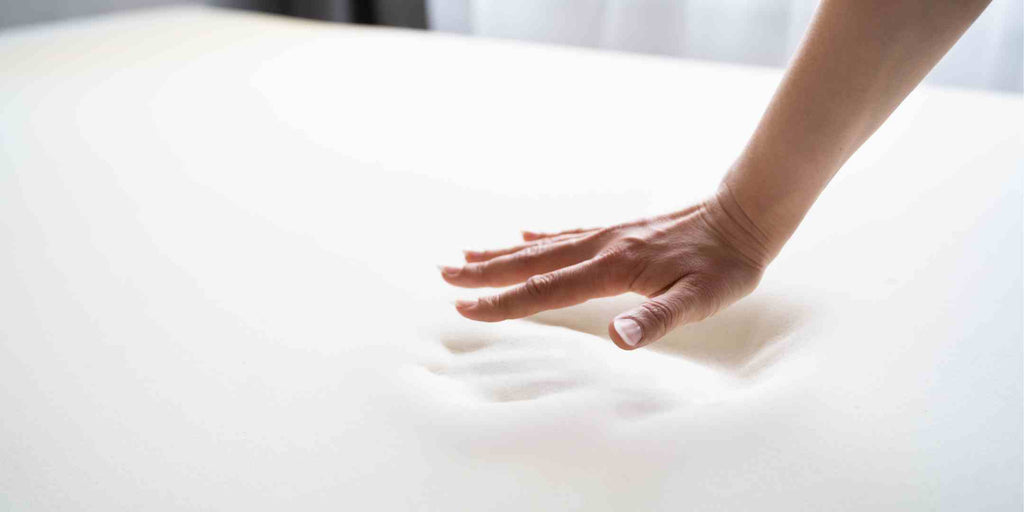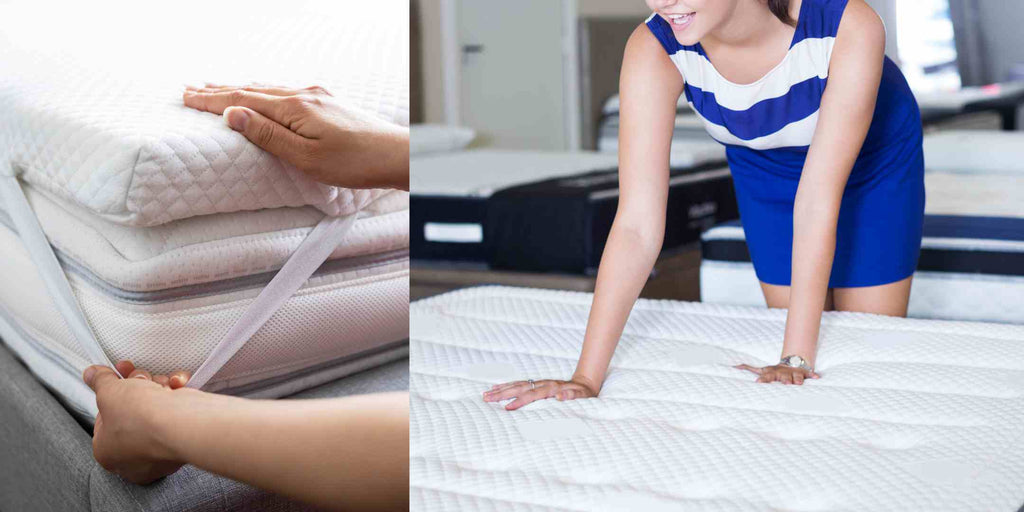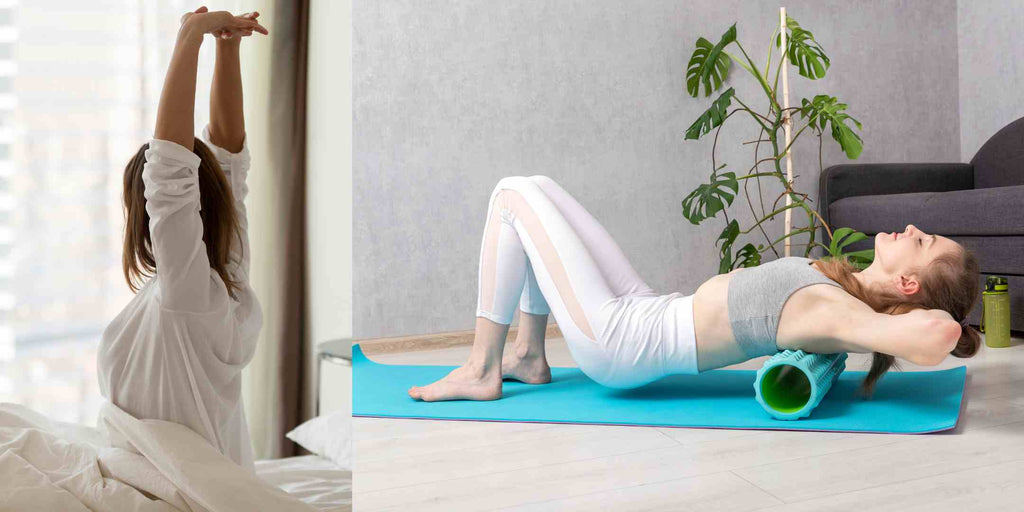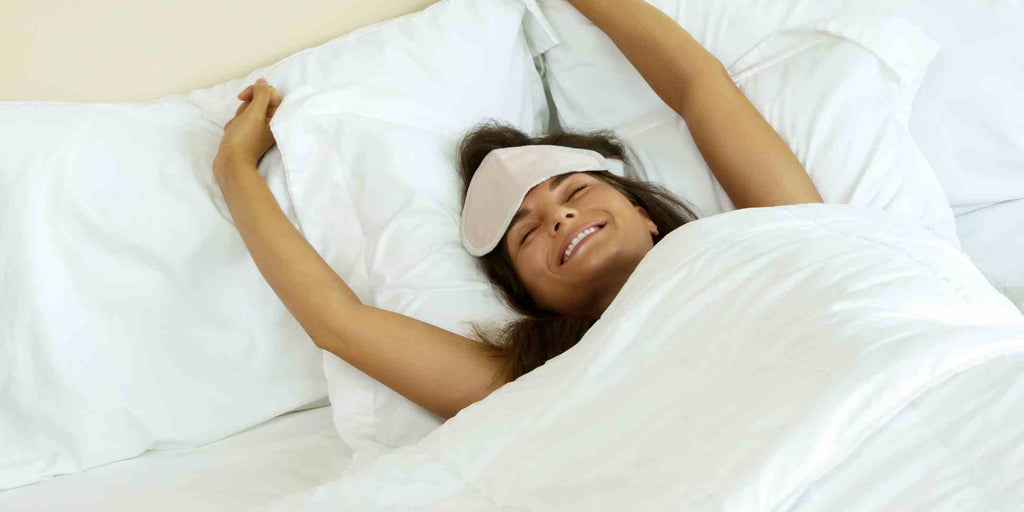Quality sleep is the cornerstone of a healthy and productive life. It rejuvenates the body, sharpens the mind, and fortifies the spirit. Yet, for an increasing number of individuals, a common problem has arisen: the morning discomfort and body aches that can follow a night spent on a memory foam mattress.
How Memory Foam Mattress Work?

Memory foam mattresses are constructed using layers of memory foam of varying densities and thicknesses. A high-density foam base or other materials often support the primary layers for added stability and durability.
Conforming Support
When you lie down on a memory foam mattress, it responds to your body's heat and weight by contouring to your shape, providing support along your spine's curves and natural alignment.
Pressure Relief
Memory foam is excellent at relieving pressure points. It distributes your body weight evenly, reducing discomfort and minimising the risk of developing pressure sores.
Motion Isolation
Thanks to its energy-absorbing properties, memory foam reduces motion transfer, which means that if your partner moves or gets in and out of bed, you're less likely to feel it on your side of the mattress.
Durability
High-quality memory foam mattresses are known for their durability and longevity. They are less prone to sagging and can often outlast traditional innerspring mattresses.
Common Causes of Body Aches on Memory Foam Mattresses

Lack of Proper Support
If a memory foam mattress is too soft or lacks sufficient underlying support layers, it may not adequately support the natural alignment of your spine. This can lead to poor posture during sleep, causing discomfort and body aches after sleeping, especially in the lower back.
Solution: To address this issue, choosing a memory foam mattress with the right firmness level and support features that match your body type and sleep preferences is crucial. Additionally, using a mattress topper or adding a firm support layer beneath the mattress can help enhance support and alleviate body aches.
Heat Retention
When memory foam absorbs and retains body heat, it can lead to discomfort, excessive sweating, and even overheating at night. Elevated body temperature can disrupt sleep patterns and contribute to body aches.
Solution: To combat heat retention on a memory foam mattress, consider the following solutions:
- Choose a memory foam mattress with cooling technologies, such as gel-infused or open-cell foam, designed to dissipate heat more effectively.
- Use breathable bedding and moisture-wicking sheets to help regulate temperature.
- Keep the bedroom cool by adjusting room temperature or using a fan or air conditioning.
- Consider using a mattress protector or topper specifically designed to enhance breathability and temperature control.
Ageing and Mattress Deterioration
Memory foam mattresses can develop indentations or sagging over time, especially in areas where you sleep most frequently, compromising the support and alignment they initially offered and causing discomfort and body aches.
Solution: To address the effects of ageing and mattress deterioration:
- Rotate your mattress regularly to promote even wear and reduce the likelihood of permanent indentations.
- Follow the manufacturer's recommendations for maintenance and care.
- Consider investing in a high-quality, durable memory foam mattress with a long lifespan to minimise the impact of ageing.
Tips for Improving Sleep Quality on Memory Foam Mattresses

Select the Right Memory Foam Mattress
Consider factors such as firmness level, thickness, density, and additional features like cooling technologies. Matching the mattress to your specific sleep preferences and body type is essential. A mattress that provides the right balance of support and comfort will help reduce pressure points, alleviate body aches, and promote better sleep.
Use Mattress Toppers for Added Comfort and Support
Mattress toppers can be a game-changer for enhancing the comfort and support of your memory foam mattress. If your existing mattress is too firm or doesn't offer enough cushioning, a high-quality memory foam topper can provide that extra layer of comfort while still benefiting from the underlying support of your memory foam mattress.
Temperature Regulation Techniques
Memory foam mattresses are renowned for their heat-retaining properties, which can be a drawback for some sleepers. Consider investing in cooling bedding, such as moisture-wicking sheets and breathable mattress protectors, to combat this. Adjusting the room temperature, using a fan, or incorporating a climate control system can help maintain a comfortable sleep environment. Some memory foam mattresses also come with cooling features like gel-infused foam or open-cell foam, which can aid in dissipating heat and keeping you cool throughout the night.
Proper Body Alignment and Sleep Posture
Achieving proper body alignment and sleep posture on a memory foam mattress is essential for reducing body aches. Ensure that your pillow and mattress combination supports the natural curvature of your spine, whether you sleep on your back, side, or stomach. Pay attention to the alignment of your head, neck, shoulders, and hips. Using pillows designed for your preferred sleep position and investing in ergonomic pillows can help maintain healthy sleep posture, alleviate discomfort, and promote better sleep quality.
Regular Mattress Maintenance and Rotation
Over time, memory foam mattresses may develop wear patterns, especially if you tend to sleep in the same position every night. To prevent permanent indentations and uneven wear, rotating your mattress regularly is advisable. Consult your mattress manufacturer's guidelines for specific recommendations on rotation and care. Proper maintenance, such as keeping the mattress clean and using a mattress protector, can extend its lifespan and ensure consistent support and comfort for a more restful night's sleep.
Ways to Address Body Aches on Memory Foam Mattresses

Targeted Stretching Exercises
Stretching can improve flexibility, reduce muscle tension, and promote better circulation, all relieving discomfort. Focus on stretches that target the areas where you experience aches, such as your lower back, shoulders, or hips, to complement the supportive properties of the mattress.
Foam Rolling and Self-Massage
Foam rolling and self-massage techniques can effectively address muscle soreness and tension that may contribute to body aches. Using a foam roller or manual massage techniques, you can release tight muscles and trigger points, promoting relaxation and pain relief. These self-care practices can work in synergy with the comfort of a memory foam mattress to ease discomfort.
Using Orthopedic Pillows and Cushions
Orthopaedic pillows and cushions are designed to provide targeted support to specific body parts, such as the neck, lumbar region, or knees. These specialised pillows can help maintain proper body alignment while sleeping on a memory foam mattress. They can reduce strain on pressure points and alleviate aches by ensuring your body remains well-supported throughout the night.
Seek Professional Advice if Body Aches Persist
If body aches persist despite trying various strategies, seeking professional advice is advisable. Consult a healthcare provider or a physical therapist to assess the underlying causes of your discomfort. They can provide personalised recommendations, exercises, or treatments tailored to your specific needs, ensuring that any underlying issues are addressed effectively and that you can enjoy pain-free sleep on your memory foam mattress.
Conclusion

Memory foam mattresses offer promise and challenges in the world of sleep quality and the pursuit of aches-free nights. By now, you're equipped with the knowledge to navigate these challenges and make the most of your memory foam mattress. Remember, achieving optimal sleep quality often involves a combination of factors – from mattress selection to temperature regulation and personal sleep habits. Your journey to enhanced sleep comfort is dynamic, and the adjustments you make today can lead to nights filled with the deep, rejuvenating rest your body craves. So, here's to sound sleep, aches-free mornings, and a brighter, more energised tomorrow.
Disclaimer: All the information, including the texts, images, and other materials on this website, is for educational purposes only. While we aim to provide accurate information, nothing on the Megafurniture website should be considered a replacement for medical advice, diagnosis, or treatment. Always consult a qualified medical professional before making any decisions regarding your health.








